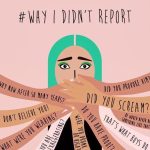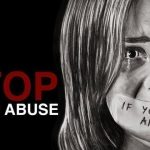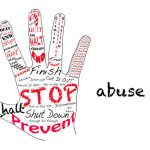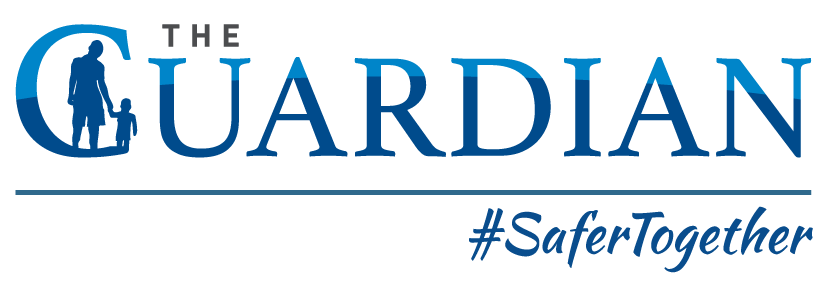What We Offer
We are specialists in Child Protection through Safeguarding, and offer a variety of Clearances, Safeguarding Policies, Education, Anonymous Reporting, and Investigations and Consulting services.




















1. Clearances
A vital element of Pro-Active SafeGuarding is to ensure that all Staff, volunteers, coaches and any other person who engages with your organisation for a prolonged period of time, is cleared against 3 registers. The clearance process can often, assist you to immediately identify a person who may be a potential risk to your organisation due to a documented trend in criminal behaviour. It is imperative that clearances are conducted before any person is allowed to engage with your organisation, whether through volunteering or if they are paid permanent staff/Employees
IT IS IMPORTANT TO BEAR IN MIND THAT A PERSON’S NAME CAN BE ON ANY ONE OF THESE THREE REGISTERS (SEXUAL OFFENDERS REGISTER, CHILD PROTECTION REGISTER, AND CRIMINAL CHECK) AND NOT BE ON THE OTHER TWO.
The Guardian assists many organisations (Schools, Sporting Clubs, Churches, etc), whose staff or volunteers may come into contact with children (or mentally disabled persons), to get cleared against the Sexual Offences Register. This is to ensure that compliance is in accordance with the Sexual Offences Amendment Act of 2007. This legislation makes it mandatory for any person who may come into contact with children (or mentally disabled persons) to be cleared against the register, and failure by the employer to do these checks is punishable by either 7 years in prison, or a fine, or both.
The Children’s Act of 2005 makes provision for a Child Protection Register. Any person who may come into contact with children whilst working as either an employee or as a volunteer must cleared against this register. Employers must check their staff, and failing to do so is punishable by either 10 years in prison, or a fine, or both.
Doing a criminal check on prospective employees and volunteers is best practice. Knowing whether your staff or volunteers have any skeletons in the closet can assist organisations filter out persons who may have ulterior motives.
2. Safeguarding Policies
Safeguarding Policies are vital in establishing the “Rules of Engagement” for safeguarding vulnerable persons. Any organisation whose staff or volunteers may engage with vulnerable persons, especially children, should define very clearly what their policies to safeguard the vulnerable are.
This should be done by initially identifying areas of risk. Once that has been done, then Policies to mitigate that risk should be drafted and implemented.
The biggest challenge that we have found with existing policies, when schools or organisations request us to review their existing ones, is that they generally haven’t been drafted by Safeguarding Specialists. Quite often these Safeguarding Policies are drafted by attorneys who have very little experience with Child Safeguarding. It is important to bear in mind that when developing your Safeguarding Policy, the purpose of the policy is to create a working document that can be used to manage Safeguarding. It may be prudent to have it vetted for legal compliance once it has been drafted, but the primary purpose of this document must be to create the rules pertaining to safeguarding, rather than ensuring your organisation is legally compliant. The Safeguarding Policy isn’t to protect the school, it’s to protect the learners.
3. Education
Education is a vital component in any organisation’s safeguarding strategy. This education should be aimed at all areas and people in the child’s life. Education strategies should include education for staff, volunteers, parents, management, and children.
Knowing how to manage Safeguarding in your organisation is extremely important. Appointing a Designated Safeguarding Officer is important in ensuring that your safeguarding is being managed correctly; however, the appointment of that person isn’t the same as appointing the person to be in charge of your stock room. It isn’t a case of just handing someone the reigns and telling them to make sure everyone is ok. There is a very specific skillset that is developed over years. And so, giving your Designated Safeguarding Officer a basic course to get them started is vital.
Education with learners must be age-appropriate. All children are at risk of being lured into toxic relationships. The perpetrator will align their grooming to the interests of the child, and so ensuring that learners are aware of what is unacceptable at their various age is critical.
Trainings like “Good Touch, Bad Touch” and “Stranger Danger” are important for little children, with an understanding that as they progress into the primary school phase, the threats change a little. As access to social media becomes a bigger part of their life, and their friends start becoming a little more important, the threats change. Once they reach high school, there is the toxic combination of the need for independence, their crazy number of hormones, and the lack of understanding of life, that creates a different risk.
Giving children the tools, they need and at the correct time, is very important. They should not be receiving the information for the associated risk too early, or the information will be disregarded; however, it is equally irrelevant when it is received too late. Once they (teenagers) have adopted an opinion on how to deal with a challenge (Sex, Drugs, Alcohol, etc.), changing that opinion is exceedingly more difficult than giving the correct, healthy information initially, and that’s why timing is so important.
Parents very often spend time searching the internet for answers on safeguarding of their children. This isn’t something parents of generations in the past would have done. They may have spoken to other parents, or their parents, because safeguarding strategies where very similar to years gone by, and the sharing of that information was valuable.
Many of the risks children face today however have never been experienced before in human history. It would be impossible to ask for guidance on some of the challenges from your parents, because the challenges didn’t exist when they were young parents. Parents need assistance in navigating these uncharted waters. An important part of any organisation’s safeguarding strategy should be to consistently send home information to parents on safeguarding principles, and when possible, allow safeguarding specialist to speak to the parents, either live or online.
Interesting Fact – The second biggest demographic that a child will disclose abuse to, after a peer, is a coach or a teacher. Any organisation that doesn’t take the time to upskill their staff or volunteers, who engage with children, on how to handle that disclosure, are placing, not only the children, but also their employees, volunteers, and organisation at risk. That is to say nothing of the fact that educators and coaches spend so much time with learners that they are ideally placed to be on the lookout for challenges that may arise. However, unless they know what they are looking for, it seems like a very large hole in any safeguarding strategy.
4. Anonymous Reporting
Your organisation’s safeguarding strategy must include the ability for anyone engaging with your organisation to report anonymously on information they may have. All too often, when a disclosure of abuse is made, it is established during the investigation that people knew about it, sometimes months or even years before, and if they had been given an anonymous reporting vehicle that they would have given the information sooner.
It is also important to bear in mind that learners at risk may be guarded about coming forward, even with their own abuse stories, but feel more comfortable disclosing anonymously so they can “test” the water and understand the consequence before coming forward.
Through The Guardian’s internationally patented anonymous reporting app, a fair percentage of the thousands of reports we have received are made by the child experiencing the abuse, so they can know the process before coming forward.
The easiest way to explain The Guardian Anonymous Reporting App from a non-technical perspective, is to explain that the app it is made-up of four parts. In reality, it is one system that combines the ability to handle all the necessary elements of Anonymous Reporting in an easy and effective way and brings the functionality of emergency reporting into one Safegurding Solution that is extremely valuable for all Designated Safeguarding Officers and/or Safeguarding Leads.
The development and functionality of this system is based on many years of experience working in the safeguarding space, having dealt with many cases of inappropriate behaviours. The solution is driven by Safeguarding Specialists which makes this solution extremely effective.
The app is accessible from both the Google Play and App Store, and is readily available in all countries that have access to these two platforms. Any country that does not have access in these two stores is able to download the app from our website. It must be borne in mind that the Apple Platform does not allow apps (that have not been placed on the App Store) to be downloaded to their devices and so the solution, for countries that do not have the Apple App Store this solution is only available to Android devices.
How the App works:
- Download the app.
- The user must set up their profiles so that it links to the organisation to which they will want to send an Anonymous Report.
- The user can then send any reports anonymously, and they are able to attach evidence in the form of other Pictures, Videos or documents.
The Management System is a website and is accessed through a portal by the organisations Designated Safeguarding Officer/Lead. This Designated Safeguarding Officer from the organization is then able to access all the Anonymous Reports which may have been received.
How the Management System works:
- The Designated Safeguarding Officer or Safeguarding Lead would receive an e-mail telling them that they have received a new anonymous report. This e-mail will give them a link to the Management System, and once they click on that link in the email, it will request that their username and password is entered to gain access to the report.
- Once they have access to the report they can then;
- Allocate the report to whomever the correct person is to investigate the allegation.
- Once the correct person, who is responsible for investigating the allegation, has received the report, that person will be able to communicate with the Anonymous Reporter through the system, but they will never know the identity of the reporter. This communication will be in both directions allowing the investigator to request any additional information, which may include pictures, videos, documents etc. The Investigator will never know the reporter’s details unless the reporter chooses to disclose this information.
Anonymous Reporting is an investigation tool and is not used in emergency situations. The rules of the system are very clear, and the person monitoring all Anonymous Reports does so primarily during office hours. It is for this reason that our system also makes provision for a Panic Button Feature.
How the Panic Button works:
- The user of the app must set up three predefined persons to whom they would want an emergency report to go to, e.g. Mom, Dad, Husband, Wife, DSO, etc.
- Once the above has been set up, then, if the user finds him or herself in a situation that they feel uncomfortable or feel that they are at risk, they can then push the panic button.
- If the Panic Button is pushed, a URL is instantly created, and that URL is instantly SMSed to the three predefined persons mentioned in Point 1.
- When the URL is opened, they would be able to access the emergency website which will be live and will receive:
- The GPS location of the phone every 10 seconds.
- A picture from the back and front cameras of the phone every 10 seconds.
- The audio around the phone from the last 10 seconds every 10 seconds.
All this information, including any information gathered through any Anonymous Reports are retained and can be used in either a forensic investigation or a disciplinary inquiry.
Additionally, the URL from the panic alert can be forwarded to anyone, including first responders, if required.
The Push Notification feature is essentially a messaging system and allows the Designated Safeguarding Officer or Lead to disseminate information to any person who has downloaded the app. Inasmuch as this feature handles messaging primarily, which may include anything from tournament times and dates, to basic safeguarding information, the purpose of this feature has less to do with the dissemination of information, and more to do with safeguarding.
The purpose of the push notification feature is primarily to address 2 issues:
- The first is from the realisation that any person who’s identified as an informant may be at risk, and so having the app on the phone may cause that identification to happen. If the Safeguarding Lead or Designated Safeguarding Officer is regularly pushing out information that all athletes may need, then the app will be on everyone’s phone and the person using it as an Anonymous Reporting App won’t be able to be identified through this.
- The second reason for having a Push Notification feature is to ensure that this solution stays front of mind. Ensuring that any person who is faced with the challenge feels comfortable with using the Anonymous Reporting App, and that their information may reach the Designated Safeguarding Officer or Lead as soon as possible.
5. Investigations & Consulting
The Guardian is South Africa’s only Private Specialist Child Abuse investigation company.
Quite often, allegations are made at schools of inappropriate behaviours, and schools are not sure how to deal with it. The Guardian can assist in the whole process, from investigating the allegation to chairing, initiating, or just guiding the process of the disciplinary enquiry. Running a disciplinary enquiry with a child witness or child accused can have some technicalities, that if not handled correctly, can create some very real risk for the organisation.
It is important to bear in mind that any investigation or consultation will be child-centric, and the rights and needs of all children will always be the first consideration.
The Guardian will happily run a full criminal investigation into any crime against a child. That includes everything from gathering statements from child victims or witnesses, to crime scene management, and chain of evidence management. The Guardian will work closely with the SAPS and NPA to ensure that the best evidence is presented to increase the chances of securing a conviction.
The lack of understanding of how to ensure the disciplinary enquiry involving a child should be run, or “what may happen if I report this”, or just consulting to understand the options available. Our team spend a lot of time consulting with parents, schools, and teachers on what their options are and how they can move forward.
